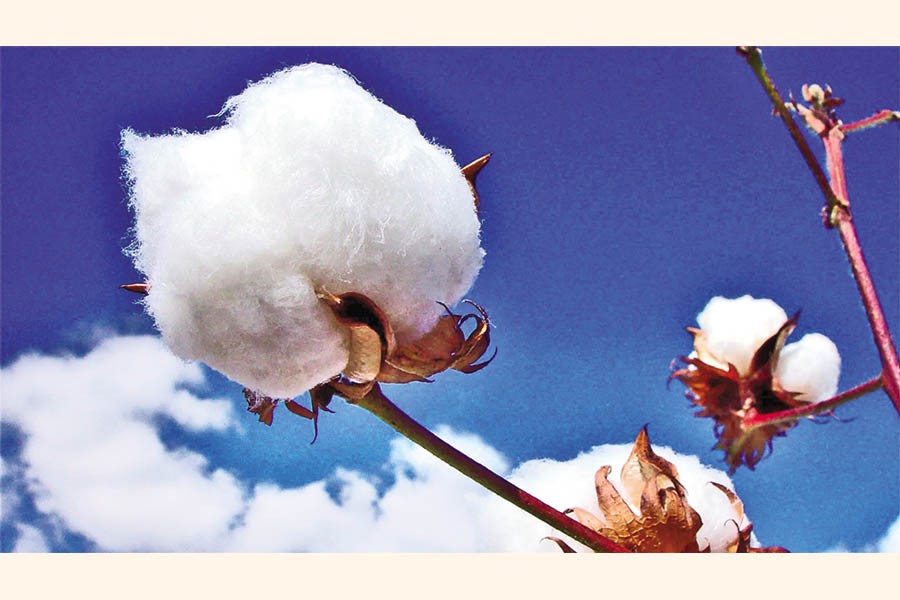
Bangladesh and Vietnam are expected to experience the fastest growth in cotton consumption and trade in the next decade as their capacities are projected to witness significant growth due to competitive labour and production costs, according to a global outlook.
The demand in the textiles and apparel sectors, as well as competition from substitutes, would remain key factors influencing raw cotton consumption.
The report also projected that world cotton trade would expand by 2.1 per cent annually reaching 12.4 million tonnes by 2033, driven largely by increased mill use in Bangladesh and Vietnam, which heavily rely on imports due to insufficient domestic production capacity.
The outlook titled 'OECD FAO Agricultural Outlook 2024-2033' is a collaborative effort by the Organisation for Economic Co-operation and Development (OECD) and the Food and Agriculture Organization (FAO) of the United Nations.
The report published on July 02 also forecast that over the next decade, global consumption of raw cotton will increase by 1.7 per cent annually, driven by population growth and rising incomes in middle- and low-income countries.
"Imports of raw cotton by Bangladesh and Vietnam would grow by over 3.0 per cent annually, significantly contributing to global trade dynamics," read the report.
Bangladesh's mill consumption of cotton would be increased to 2.42 million tonnes which was 1.71 million tonnes in 2023, it said.
The report showed that the country's import share of cotton would be 18 per cent in 2033 while China would gain the highest 23 per cent of the global share.
The United States would remain the largest exporter with its share of world trade reaching 31 per cent by 2033, it mentioned.
Global cotton production is projected to steadily increase to 29 million tonnes by 2033, marking a 17 per cent rise from 21.14 million tonnes in the base year of 2004.
The growth will primarily stem from key producers: India is expected to contribute approximately 38 per cent to the global increase, followed by the United States (27 per cent), and Brazil (21 per cent).
The reliance on imports, according to the report, coupled with the projected growth in consumption, underscored Bangladesh's crucial role in the global cotton market.
The phase-out of the Multi-Fibre Arrangement in 2005 initially favoured Chinese textile producers. Still, Bangladesh and Vietnam saw robust growth in their textile industries driven by abundant labour, low production costs, and government support measures.
Vietnam's accession to the World Trade Organization in 2007 and significant foreign direct investment, particularly from Chinese entrepreneurs, further boosted its textile sector, it said.
Additionally, Free Trade Agreements (FTA) such as the Comprehensive and Progressive Agreement for Trans-Pacific Partnership and the EU-Vietnam Free Trade Agreement facilitated greater market access for Vietnamese textile exports.
On the other hand, similar foreign investments and FTAs contributed to Bangladesh's emergence as a major global player in textiles.
Furthermore, the US-China trade dispute increased mill use in Bangladesh and Vietnam, driving their textile industry expansions, according to it.
In Bangladesh, investments in spinning capacity driven by increasing domestic demand for yarn and fabric are expected to raise cotton fibre consumption by 3.3 per cent annually, solidifying its position in the global textile market and significantly contributing to its economic development, the outlook mentioned.
Despite this shift, China is expected to retain its position as the largest cotton processing country in 2033, followed by India, with annual consumption growth projected at 0.9 per cent and 1.5 per cent respectively over the next decade.
The global cotton production would grow as a result of improved yields and higher compliance with sustainable standards, it added.
The leading producing countries -- India, China, the United States, Brazil, and Pakistan -- are expected to account for around 77 per cent of global output by 2033.
According to the report, over the past decades, global demand for textile fibres has sharply increased, driven mainly by population and income growth, particularly in low- and middle-income countries and the expanding demand has been largely supplied by chemical fibres.
Synthetic fibres offered diverse advantages over cotton, such as durability, wrinkle resistance, moisture-wicking properties, and competitive pricing, leading the textile manufacturing industry to favour them over cotton fibres increasingly, it said.
As a result, global consumption of natural fibres, including cotton, peaked at 26.5 million tonnes in 2007 but declined to about 24.4 million tonnes from 2021 to 2023.
Since the early 1990s, non-cotton fibres have steadily gained market share, reaching 78.2 per cent in 2023, while cotton's share declined to 21.8 per cent, the report showed.
According to industry people, Bangladesh largely manufactures cotton-based garments as 75 per cent of the readymade garments shipped for export are made from cotton.
© 2024 - All Rights with The Financial Express
